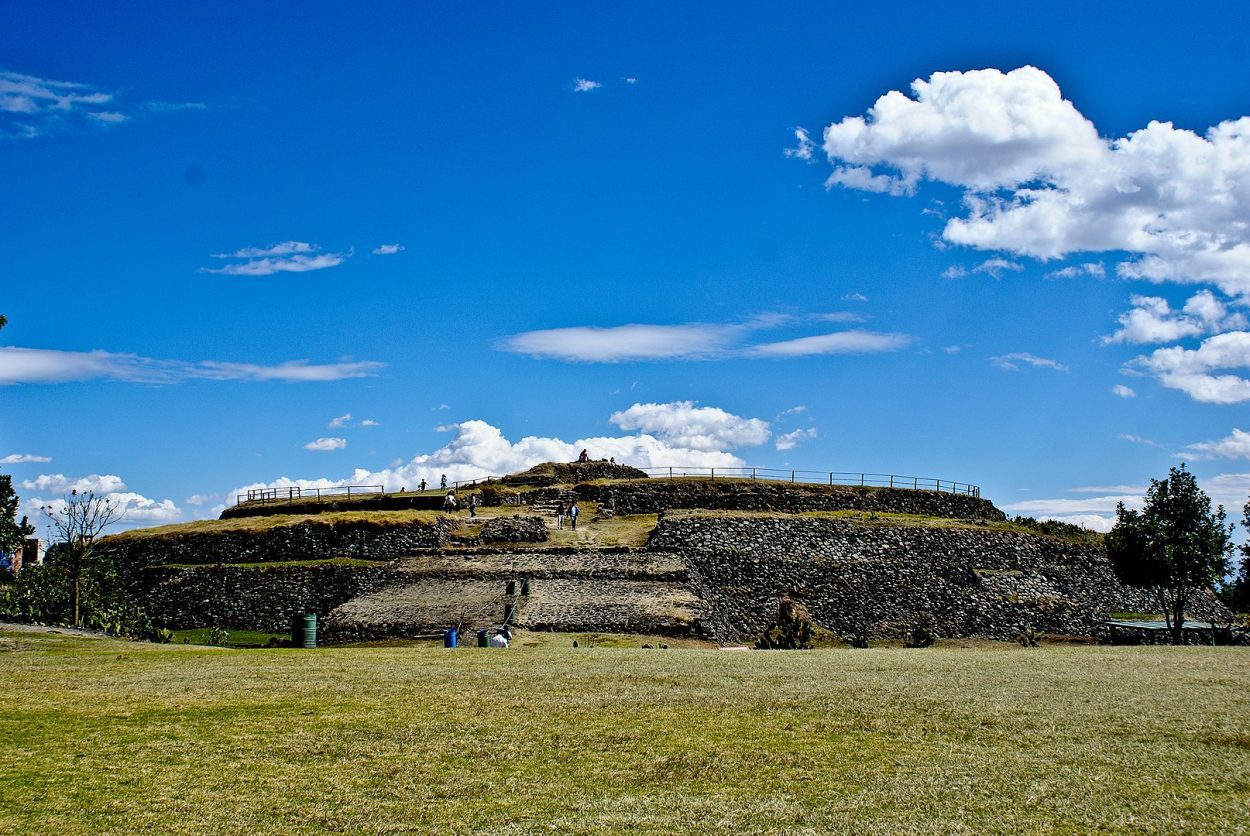Cuicuilco is a Mesoamerican city that was located on the southern shores of Lake Texcoco, in what is now the present-day borough of Tlalpan in Mexico City.
The city emerged during a period when Mesoamerican villages from the mid-Preclassic (800 BC) were merging into the large population centres of the late Preclassic (AD 100).
The city became an important regional urban and ceremonial centre comparable with Teōtīhuacān, inhabited by an estimated population of around 20,000 people that had an agricultural economy based on farming the fertile land in the surrounding lagoon basin of the Mexico Valley.
The people practiced cranial deformation using circular wraps with rigid compression devices, resulting in rounded heads or oblique tubular features that show similar characteristics of Olmecoid head portraiture, suggesting the possible interacting with the Olmec of the Gulf Coast of lowland Veracruz and Tabasco (also known as the Olmec heartland).

Excavations at Cuicuilco have revealed several small platform structures, houses, and plazas which are estimated to have covered an area of 1,000 acres, centred on a large truncated cone pyramidal structure.
The pyramid, which is an early form of the large temple pyramids that would dominate Mesoamerican sites as Teōtīhuacān, the great Maya cities, and the Aztec capital Tenochtitlan, was constructed during the 5th century BC, and was built with a stone core covered with sun-dried brick and a volcanic stone facing.
On the pyramid’s summit was a stone altar that shows traces of a red pigment (cinnarbar), suggesting that the people of Cuicuilco practiced ritual sacrifice during religious ceremonies.
A series of eruptions at the Xitle volcano during the end of the pre-Classic period released basaltic lava flows that engulfed much of the city in volcanic rock, leading to the dispersion of Cuicuilca’s people towards Toluca and Teōtīhuacān.
Teōtīhuacān hosted a large part of the Cuicuilcas and incorporated many features of their culture, giving rise to Teōtīhuacān as the centre of the Basin of Mexico for the next 500 years.
Header Image Credit : Alejandro Medina – Shutterstock





